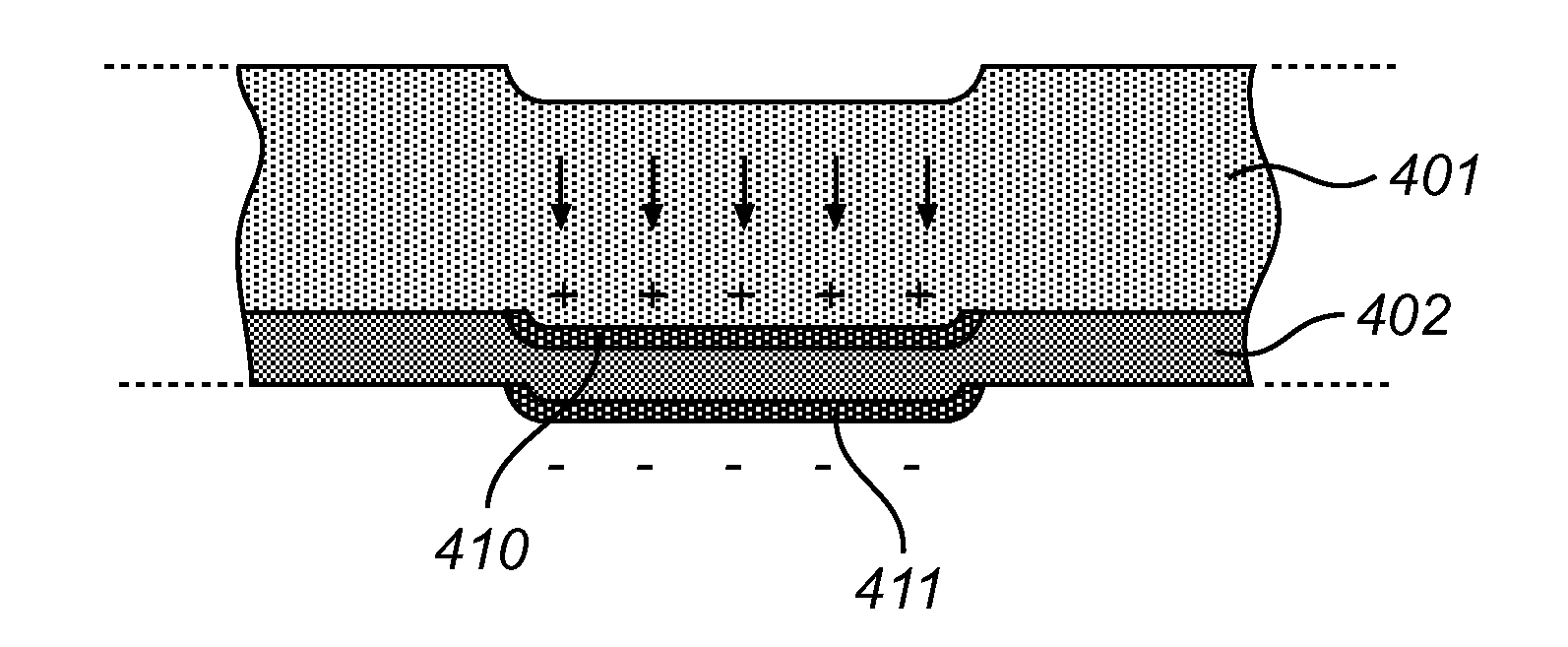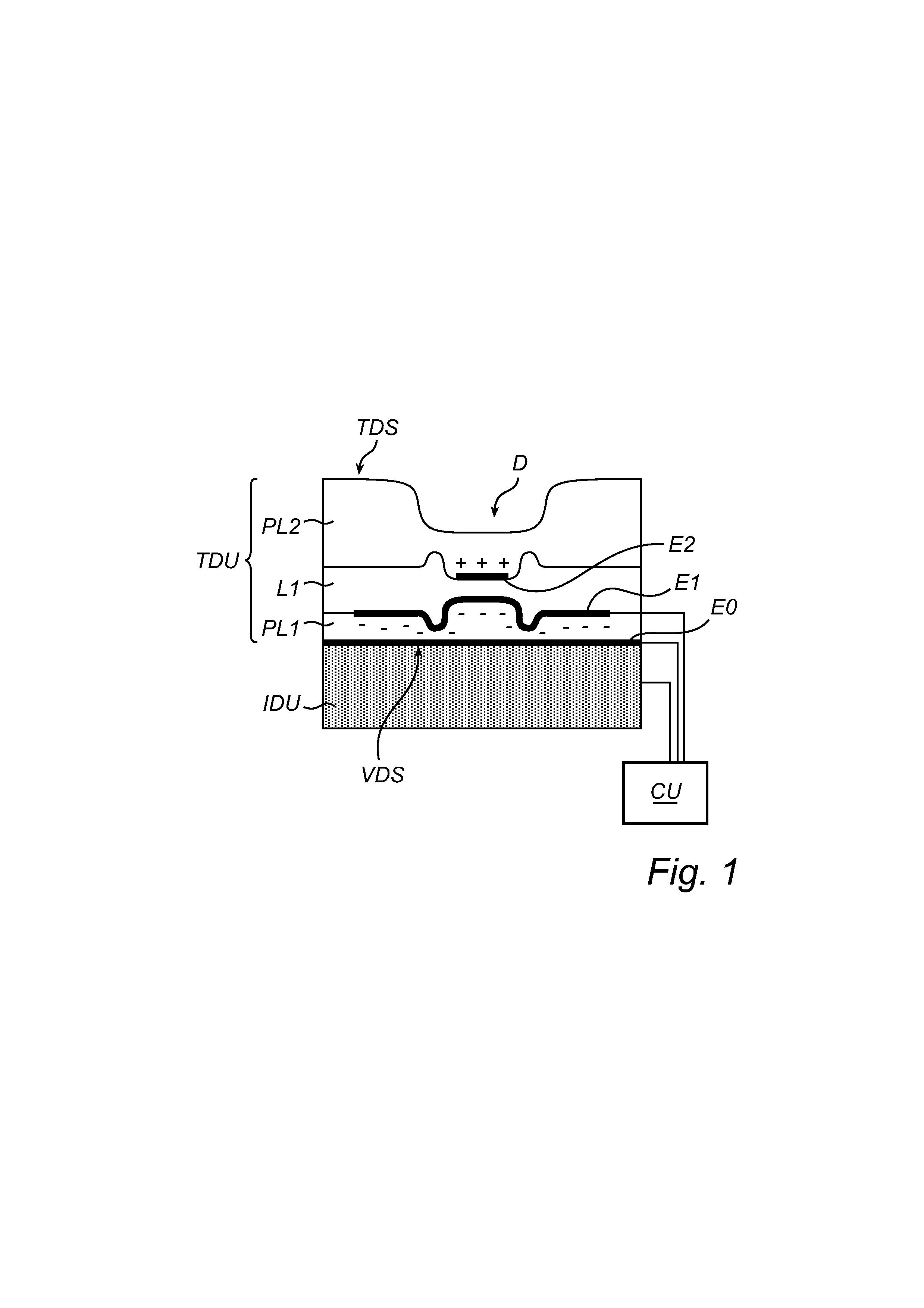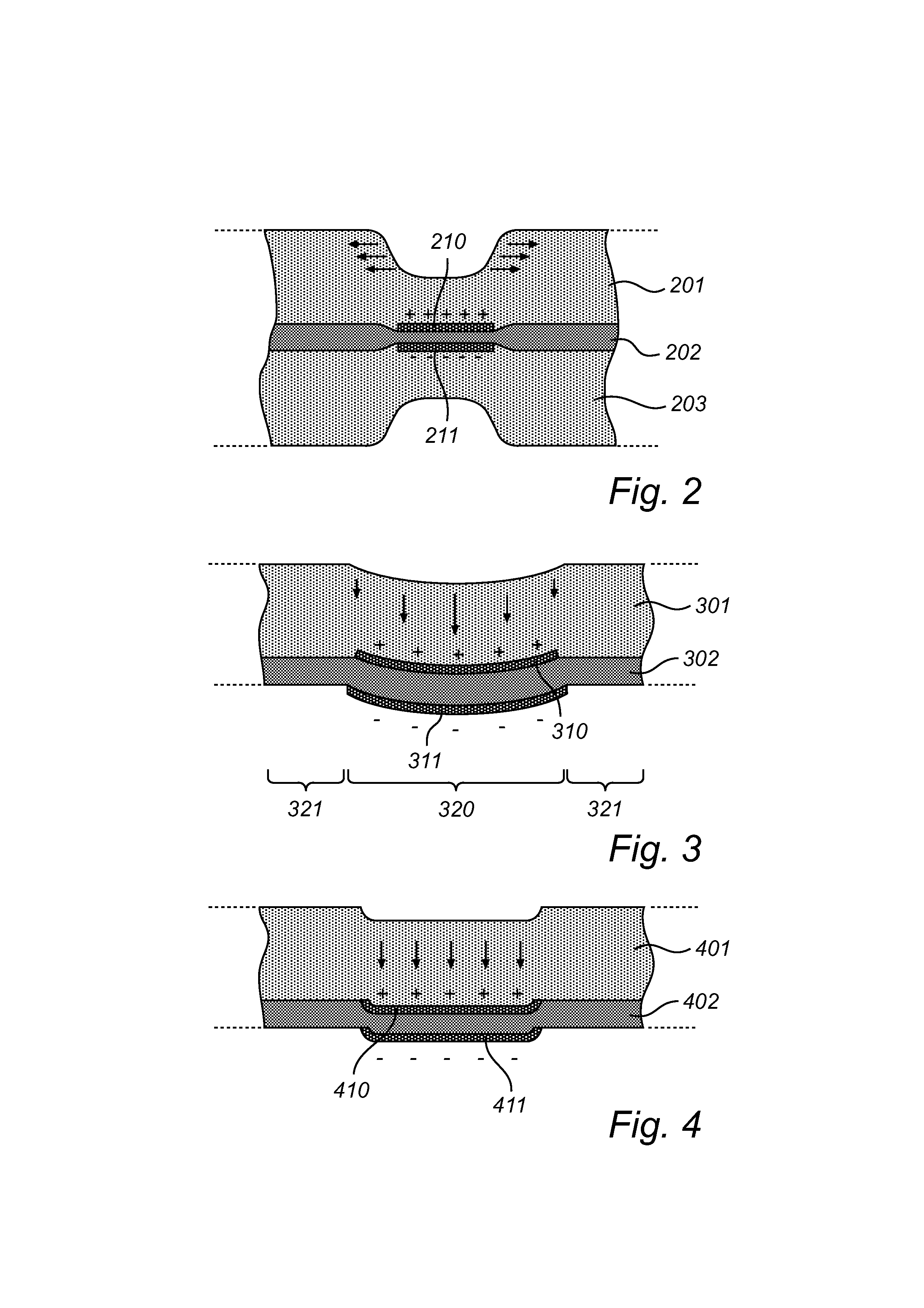Electoactive polymer actuator
a polymer actuator and actuator technology, applied in piezoelectric/electrostrictive/magnetostrictive devices, instruments, optics, etc., can solve the problems of inability to adjust the position of the actuator, and inability to produce sharp edges, etc., to reduce the energy consumption of the life cycle, reduce the local stress, and reduce the effect of energy consumption
- Summary
- Abstract
- Description
- Claims
- Application Information
AI Technical Summary
Benefits of technology
Problems solved by technology
Method used
Image
Examples
example
[0048]Without being limited thereto, the invention will be illustrated by an example concerning an actuator of the type shown in FIG. 5.
[0049]First, an 80 μm thick film of Nusil® CF 2186 was fabricated using for instance doctor blading of the freshly mixed components onto an anti-adhesive plate, such as a Teflon® plate. This layer, which would form the EAP layer of the laminate, was cured at 60° C. for one hour. Next, a stretchable electrode was made on top of the Nusil® layer by screen printing carbon black (e.g., Monarch® 1000) in n-heptane through a patterned screen. Subsequently, a thicker, softer polymer (e.g., Silastic®) was casted or doctor-bladed over the EAP layer and electrode. After polymerization (in air, for Silastic®), this formed a passive layer acting as texture enhancement layer with a lower elastic modulus than the actuation layer: Silastic® has a modulus of about 0.3 MPa, while Nusil® has a modulus of about 1 MPa. For tactile applications, the thickness of this la...
PUM
 Login to View More
Login to View More Abstract
Description
Claims
Application Information
 Login to View More
Login to View More - R&D
- Intellectual Property
- Life Sciences
- Materials
- Tech Scout
- Unparalleled Data Quality
- Higher Quality Content
- 60% Fewer Hallucinations
Browse by: Latest US Patents, China's latest patents, Technical Efficacy Thesaurus, Application Domain, Technology Topic, Popular Technical Reports.
© 2025 PatSnap. All rights reserved.Legal|Privacy policy|Modern Slavery Act Transparency Statement|Sitemap|About US| Contact US: help@patsnap.com



